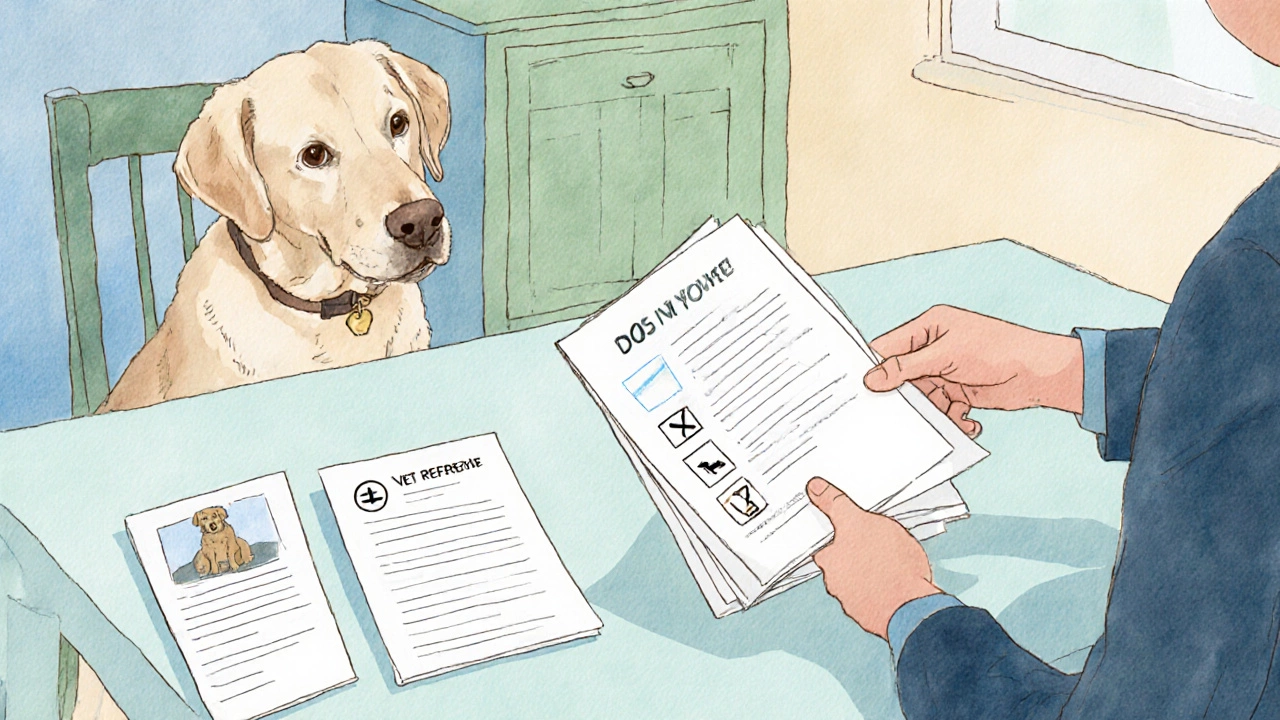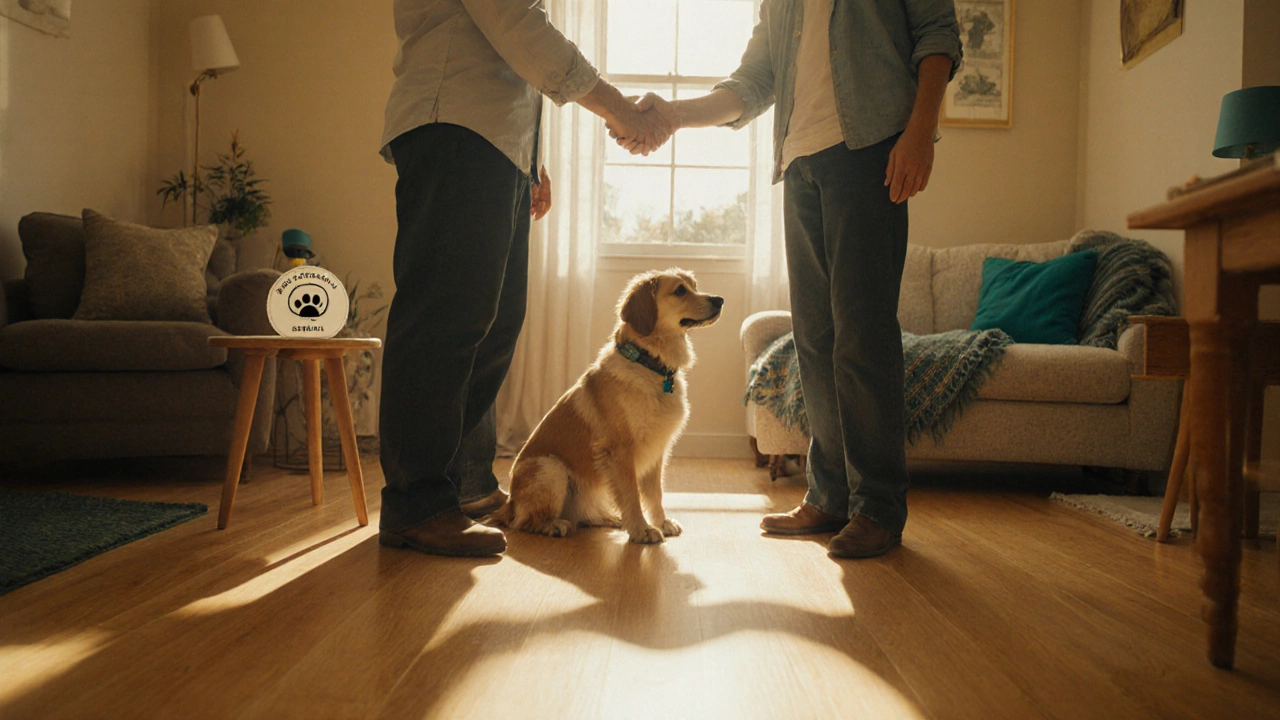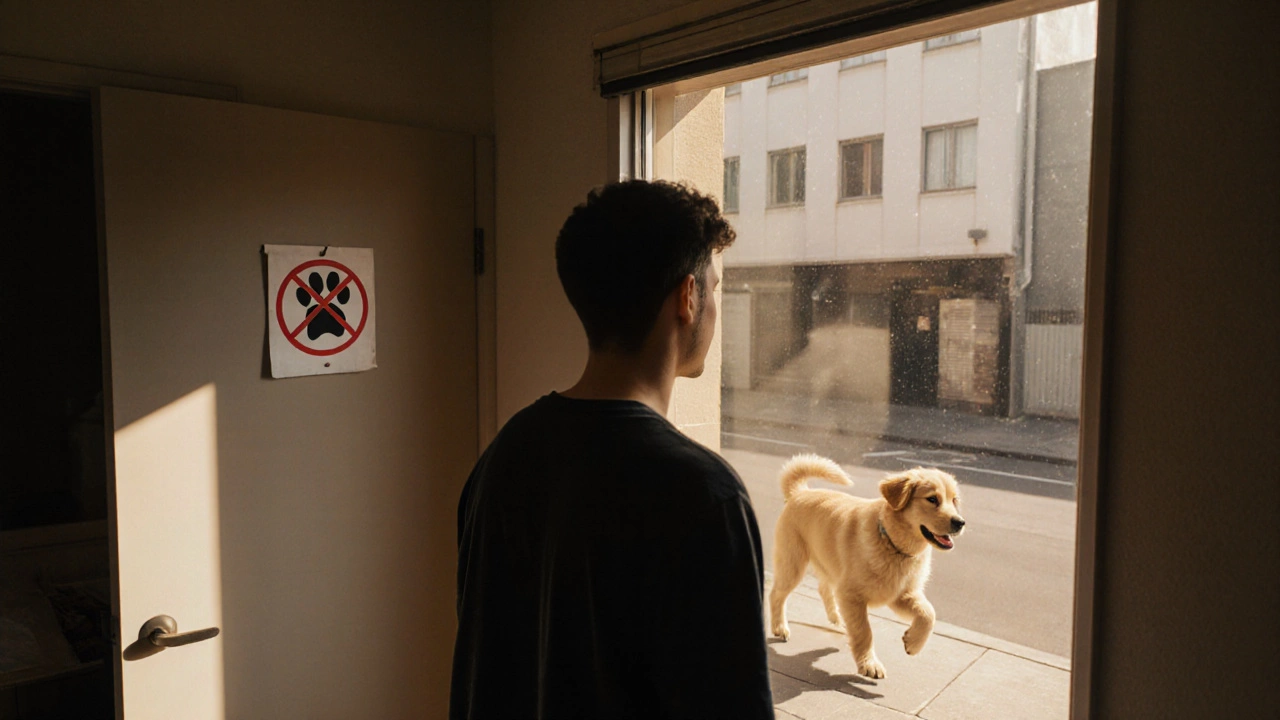Pet Deposit Calculator
Rental Information
Pet Options
| Option | Upfront Cost | Monthly Cost | Annual Cost | Best For |
|---|
Key Takeaway:
Ever stared at a cute puppy in a window and wondered if you could bring it home, only to hit the wall of a strict no‑pets rule? You’re not alone. Tenants across Auckland and the rest of New Zealand face the same dilemma, especially when a furry companion could boost happiness and even mental health. The good news? With the right approach you can turn a "no dogs" sign into a "welcome puppy" invitation.
What a Pet-friendly rental is really means
A pet‑friendly rental is simply a rental property that permits tenants to keep pets, usually under clear conditions. Those conditions are spelled out in the lease, but the underlying question is always the same: why would a landlord risk extra wear, possible damage, or liability?
Step 1 - See the world through the Landlord’s eyes
Before you craft a request, understand the concerns that keep landlords from saying yes. Common worries include:
- Potential damage to flooring, carpets, or walls.
- Noise complaints from neighbours.
- Allergy issues for future tenants.
- Legal liability if the animal bites or causes injury.
When you can address each of these points proactively, you’ll look less like a risk and more like a responsible partner.
Step 2 - Check the existing Pet clause and local regulations
First, read your current lease. Some agreements include a blanket “no pets” line, while others have a specific clause that allows pets with written permission. If the lease is silent, you have more room to negotiate.
New Zealand’s Residential Tenancies Act 1986 doesn’t forbid pets, but it does let landlords set reasonable conditions. In Auckland, the city council recommends that landlords provide a clear pet policy, and recent court cases (e.g., Smith v. Green 2023) have shown judges leaning toward reasonable accommodation for tenants with pets, especially where mental‑health benefits are documented.
Step 3 - Build a rock‑solid case with a "pet resume"
Think of yourself as a Tenant applying for a new job - you need to show you’re a good fit. A pet resume can include:
- Dog profile: breed, size, age, temperament, and any training certificates.
- Reference letter from a previous landlord or a Veterinarian confirming vaccinations, regular check‑ups, and good health.
- Pet insurance details: policy number, coverage limits, and premium cost.
- Proof of responsibility: obedience class completion, clean‑record for barking or aggression.
Handing over a concise, professional packet shows you’ve thought through every angle.

Step 4 - Offer financial assurances that ease the landlord’s mind
Money talks, especially when it comes to potential damage. Here are three common options you can propose:
| Fee type | Typical cost (NZD) | Pros | Cons |
|---|---|---|---|
| Pet rent | $15‑$30 per week | Ongoing revenue for landlord; spreads risk over time. | Tenant pays forever, even if pet causes no damage. |
| One‑time pet fee | $200‑$500 | Lumpsum covers minor repairs; simple to administer. | Often non‑refundable; may not cover major damage. |
| Increased security deposit | Extra $300‑$800 | Landlord can claim specific damages; refundable if none. | Higher upfront cost for tenant; may exceed legal limits. |
| Pet insurance | $120‑$250 per year | Covers veterinary costs and liability; shows responsibility. | Tenant must maintain policy; does not replace deposit. |
Pick the option that best matches the landlord’s concerns and your budget. Many landlords appreciate a combination-say, a modest increase in the security deposit plus proof of pet insurance.
Step 5 - Highlight the benefits for the landlord
When you frame the conversation, turn the tables: Explain how letting a dog can actually help the landlord.
- Long‑term tenancy: Responsible pet owners tend to stay longer, reducing vacancy turnover.
- Higher rent stability: Adding pet rent can increase monthly cash flow.
- Better property condition: A tidy pet owner will likely keep the unit cleaner to protect their deposit.
Back up each claim with a quick statistic-like the 2022 NZ Rental Survey which found that properties allowing pets had a 12 % lower vacancy rate.
Step 6 - Craft a polite, written request
Put your case in writing. A concise email or letter works best. Include:
- Brief introduction and appreciation of the property.
- Clear statement of what you’re asking for (e.g., permission to keep a small, neutered Labrador).
- Attachment list (pet resume, insurance proof, reference letter).
- Proposed financial arrangement (extra deposit, pet rent, etc.).
- Assurance of a clean‑up plan: professional carpet cleaning after move‑out, regular waste disposal, a nail‑trimming schedule.
- Invitation for a meeting or a walk‑through with the dog, if the landlord wishes.
Keep the tone friendly and solution‑focused. Avoid demanding language; instead, ask, "Would you be open to discussing a mutually beneficial arrangement?"

Step 7 - Negotiate wisely
If the landlord hesitates, be ready to compromise:
- Offer a trial period of one month, after which they can reconsider.
- Propose a signed pet agreement that outlines cleaning responsibilities and noise limits.
- Agree to a higher Security deposit that covers any potential damage.
Stay calm, listen to their concerns, and respond with concrete solutions. Remember, the goal is to build trust, not to win a battle.
Step 8 - When the answer is still “no”
Sometimes a landlord simply won’t budge, no matter how reasonable your offer. In that case, consider these alternatives:
- Search for another pet‑friendly rental in the same neighbourhood-Auckland has a growing number of listings that cater to pets.
- Look for a sub‑let where the primary tenant already has permission for a dog.
- Ask if a “pet addendum” can be added to a future lease renewal, giving you time to prove your reliability.
- Consider short‑term pet‑boarding services while you stay in a no‑pet unit.
Don’t let a single rejection stop you; the right property is out there, especially as more landlords recognise the market demand for pet‑friendly options.
Quick checklist before you hit send
- Read the existing lease and locate any Pet clause.
- Gather a pet resume: dog profile, vet reference, insurance proof.
- Decide which financial assurance (pet rent, deposit, fee) suits both parties.
- Draft a polite, solution‑focused written request.
- Prepare to negotiate: trial period, extra cleaning, higher deposit.
- Have a backup plan if the landlord says no.
Can I add a dog without changing my lease?
Only if the current lease includes a pet provision or the landlord signs a separate pet addendum. Changing the lease without permission can breach the agreement and lead to eviction.
What amount of extra deposit is legal in New Zealand?
The Residential Tenancies Act caps total bond at four weeks’ rent. Any pet‑related deposit must be included within that limit, unless the landlord opts for a non‑refundable pet fee instead.
Does pet insurance cover property damage?
Most pet liability policies cover injuries to third parties and damage caused by the animal, but they often exclude cosmetic property damage. Look for a policy that explicitly includes "property damage" if you want that protection.
How can I prove my dog won’t be a nuisance?
Provide a certificate of obedience training, a recent vet health check, and a written commitment to keep noise (barking) under a certain decibel level, perhaps measured with a simple phone app.
What if my landlord still says no after I offer extra security?
Respect the decision and start looking for a truly pet‑friendly property. Trying to force the issue can damage your rental history and lead to legal trouble.
Are there any neighbourhoods in Auckland known for being pet‑friendly?
Suburbs such as Mt Eden, Ponsonby, and Takapuna have a higher proportion of rentals that allow dogs, partly because of the many nearby parks and walking trails.
